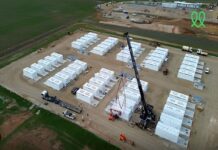
Boosting new gas supply will be essential to fuel Western Australia’s plans to phase out coal from electricity and ensure affordable energy for minerals processing, according to a leading energy research firm.
Rystad Energy emphasised the critical need for new gas supply in an article published in the 2024 Australian Energy Producers Journal.
The firm stated that the case for new supply is “extremely strong,” citing forecast shortfalls that could “reduce the competitiveness of WA’s gas-intensive industries.”
Western Australia requires 8 to 10 trillion cubic feet (TCF) of gas through to 2050. However, current supply projections only cover about 5 TCF, according to Rystad Energy.
“In the absence of further supply, this will challenge WA’s ambitions to become a minerals processing hub,” Rystad Energy stated.
“The attempt to ensure supply security could lead to coal generation phase-outs in WA being pushed back, which would jeopardise the state and Australia’s interim emissions reduction targets.”
The journal’s release coincides with the 2024 Australian Energy Producers Conference & Exhibition in Perth this week.
Caroline Cherry, Australian Energy Producers WA director, emphasised the importance of new gas developments.
“The state’s gas producers have delivered reliable and affordable energy for decades and are keen to invest in new supply,” she said.
“But the right policy settings are needed to set the investment conditions so WA’s reserves can be developed.”
Cherry urged the state to explore and develop new gas supplies to avoid energy market turmoil.
“Streamlining approvals processes is one of the fastest ways to get new gas to market. Lifting the export ban for onshore projects will make more ventures viable and supply more gas to the domestic market,” she added.
In December, the Australian Energy Market Operator (AEMO) warned of a decade of shortages in WA due to growing demand driven by gas replacing coal in electricity and powering mining.
AEMO also upgraded projected gas demand growth to 2.2 percent annually over the next decade, up from 1.7 per cent forecast last year.



















